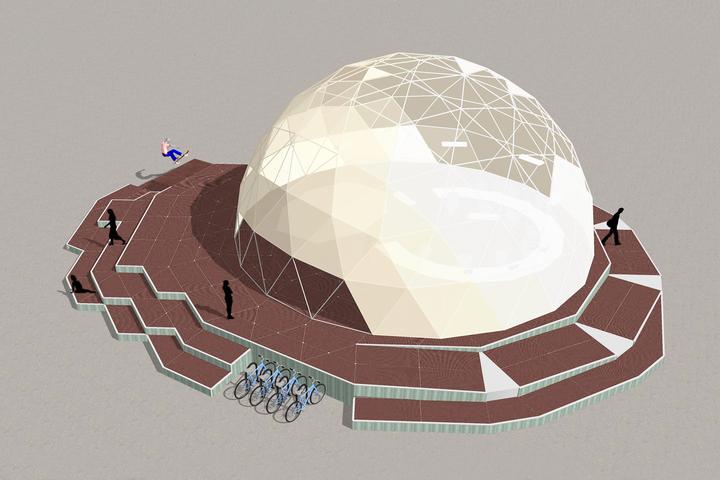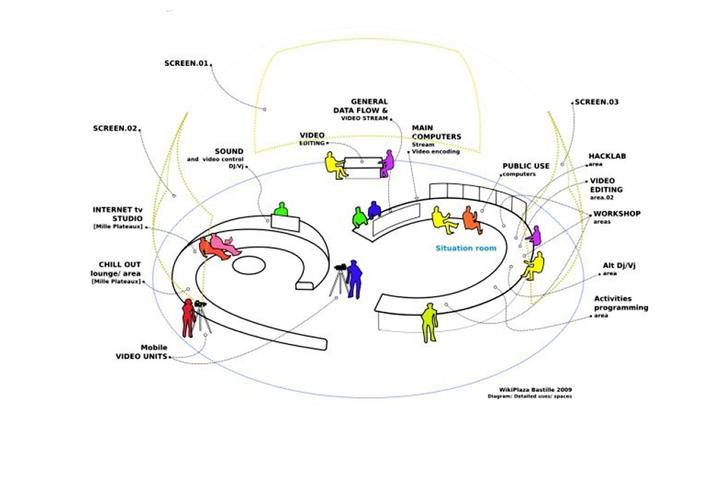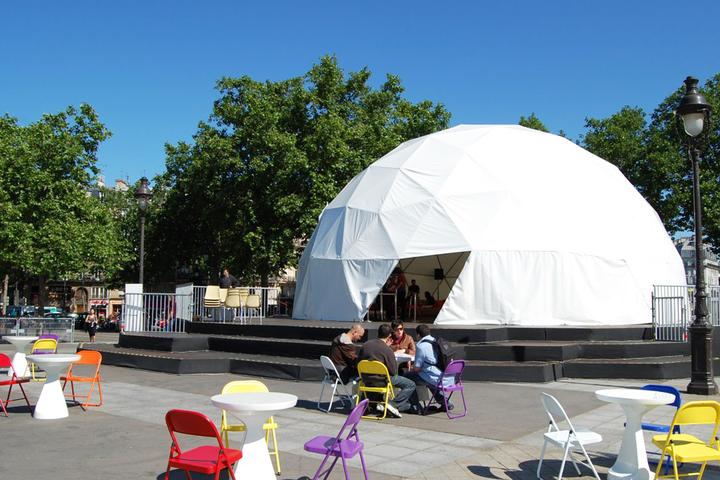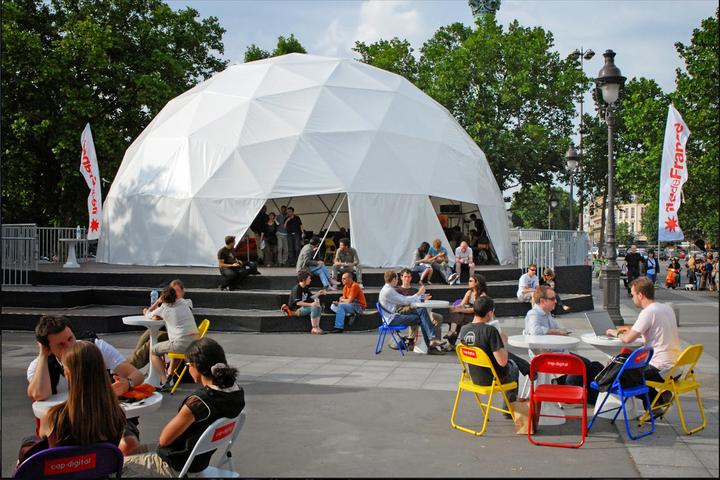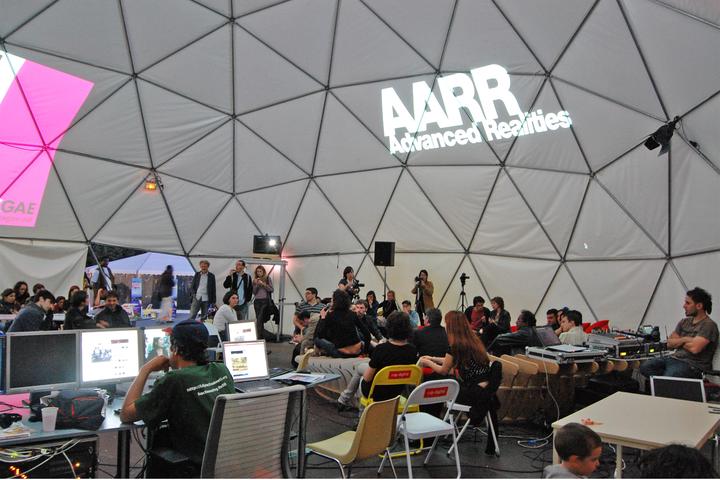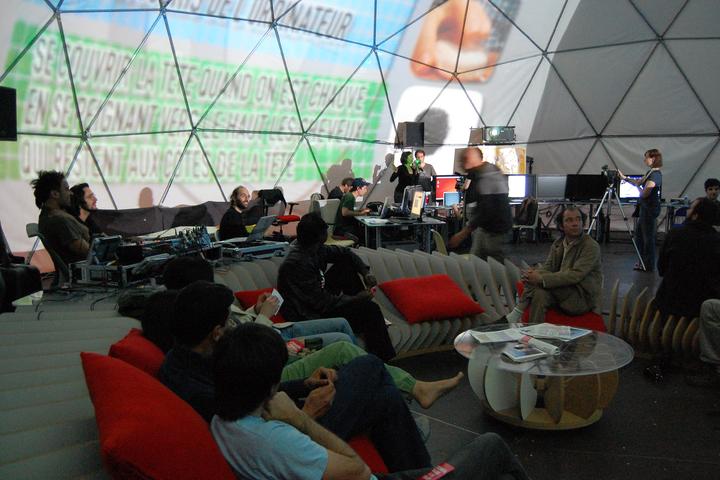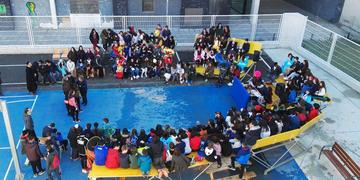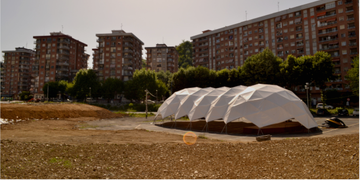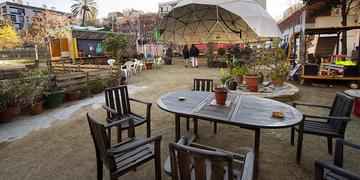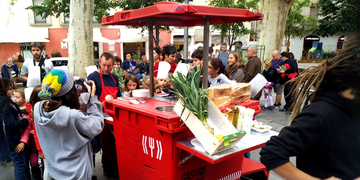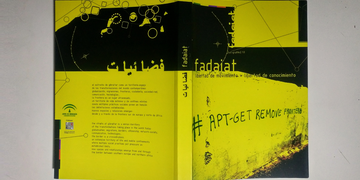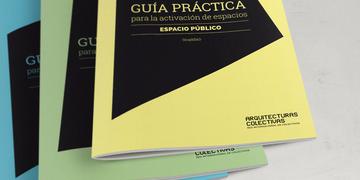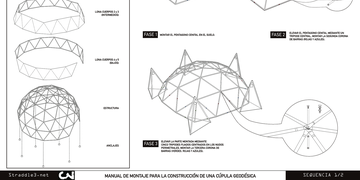Wikiplaza
Hybrid Public Space
Faced with the progressive deactivation of public space, the Sevillan collective Hackitectura proposed to generate another type and prototype of public space. A place to experiment with information and communication technologies as instruments of individual and community emancipation.
From the festival to the city
With tools such as free software and hardware, web 2.0 technologies and the open and transparent use of spaces and systems. The WikiPlaza was assembled for the Futur in Seine. Festival of the Ville Numerique in Paris. It is an experimental project that brings the efforts of groups of architects, hackers and activists together.
The first Wikiplaza prototype was held in Paris, the production was part of the Futur en Seine festival. Festival de la Ville Numerique promoted by Paris Cap Digital and curated by Ewen Chardronnet. The Wikiplaza was placed in the Place de la Bastille, one of the reference places of the capital, and functioned as the main hub of another series of projects that were integrated into the festival.
For the first prototype, the combination of a geodesic dome and a platform conditioned for various uses as a physical support of the WikiPlaza was proposed. The concept is based on a modular structure, which provides maximum flexibility to adapt to different contexts and budgets, and allows the independent development of the different modules.
This infrastructure was made up of light architectural elements and technological systems (hardware, netware, software) designed to be used by the public in a participatory and open manner, to share knowledge and experiences, to access local and remote resources, to connect with other people and locations. The idea of freedom of knowledge, the distribution of information and access to networks is key to the WikiPlaza.
There were constant debates, presentations, workshops on topics such as free culture, new technologies, software and free hardware or the social construction of space. All this activity between the street, the dome, the flow of visitors and the tangles of cables, was broadcasted live via Internet, while at the same time recorded and shared, creating a magnificent and dense archive. All this thanks to software developed by ex-professionals for the event.
From the festival to the city
With tools such as free software and hardware, web 2.0 technologies and the open and transparent use of spaces and systems. The WikiPlaza was assembled for the Futur in Seine. Festival of the Ville Numerique in Paris. It is an experimental project that brings the efforts of groups of architects, hackers and activists together.
The first Wikiplaza prototype was held in Paris, the production was part of the Futur en Seine festival. Festival de la Ville Numerique promoted by Paris Cap Digital and curated by Ewen Chardronnet. The Wikiplaza was placed in the Place de la Bastille, one of the reference places of the capital, and functioned as the main hub of another series of projects that were integrated into the festival.
For the first prototype, the combination of a geodesic dome and a platform conditioned for various uses as a physical support of the WikiPlaza was proposed. The concept is based on a modular structure, which provides maximum flexibility to adapt to different contexts and budgets, and allows the independent development of the different modules.
This infrastructure was made up of light architectural elements and technological systems (hardware, netware, software) designed to be used by the public in a participatory and open manner, to share knowledge and experiences, to access local and remote resources, to connect with other people and locations. The idea of freedom of knowledge, the distribution of information and access to networks is key to the WikiPlaza.
There were constant debates, presentations, workshops on topics such as free culture, new technologies, software and free hardware or the social construction of space. All this activity between the street, the dome, the flow of visitors and the tangles of cables, was broadcasted live via Internet, while at the same time recorded and shared, creating a magnificent and dense archive. All this thanks to software developed by ex-professionals for the event.

-
wwb website
https://wwb.cc/proyectos/wikiplaza-par%C3%ADs -
hackitectura.net website
http://x.hackitectura.net/es/wikiplaza-paris/ -
Thesis hybrid physical-digital spaces
https://upcommons.upc.edu/bitstream/handle/2099.1/24082/ReljaFerusic_TFM.pdf?sequence=1&isAllowed=y
-
Dome assembly manual [1.6 MB]

